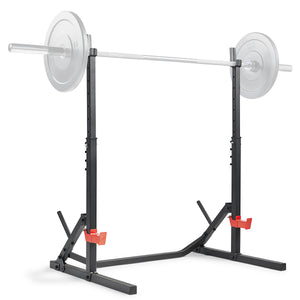The landscape of fitness is often marred by misconceptions, particularly concerning women and weightlifting. Despite the growing body of evidence supporting strength training for women, persistent myths continue to deter many from incorporating it into their routines. This blog aims to debunk common myths surrounding women and weightlifting, highlighting the benefits and addressing concerns that may arise.
Myth 1: Weightlifting Makes Women Bulky
One of the most prevalent myths is that weightlifting will make women bulky. This misconception stems from the belief that women can build muscle mass at the same rate as men. In reality, women generally have significantly lower levels of testosterone, which makes it more challenging for them to gain large amounts of muscle mass(1).
Instead, weightlifting helps women achieve a toned appearance by reducing body fat and increasing lean muscle mass. Research indicates that strength training can lead to improvements in body composition without necessarily increasing weight(2). A study by Rhea et al.(3) demonstrated that women who engaged in resistance training experienced substantial improvements in strength and body composition without the bulky appearance that is often feared.
Myth 2: Cardio is the Only Way to Lose Weight
Many women believe that cardio is the only effective means of weight loss. While cardiovascular exercise is important for overall health and can contribute to weight loss, it is not the only method. In fact, weightlifting can be equally effective, if not more so, for weight management.
A review by Swain and Franklin(4) highlighted that resistance training can elevate resting metabolic rate, which can aid in weight loss and maintenance. Additionally, studies show that combining resistance training with cardio leads to greater fat loss compared to cardio alone(5). This is particularly relevant for women, who may benefit from incorporating strength training into their fitness regimen to maximize fat loss and improve muscle tone.
Myth 3: Women Should Lift Lighter Weights
Another common myth is that women should lift lighter weights to avoid injury or to achieve a leaner physique. This notion underestimates women’s capabilities and fails to recognize that lifting heavier weights can yield better results. The principle of progressive overload—gradually increasing the weight or resistance—applies to all individuals, regardless of gender (6).
Research has shown that lifting heavier weights can lead to increased strength and muscle gains for women. A study conducted by Peterson et al.(7) found that women who engaged in heavy resistance training demonstrated significant improvements in strength, regardless of their initial fitness level. Furthermore, lifting heavy weights can enhance bone density, reducing the risk of osteoporosis, which is particularly crucial for women as they age(8).
Myth 4: Weightlifting is Dangerous for Women
Concerns about injury and safety are often cited as reasons for avoiding weightlifting. While it is true that improper form and inadequate preparation can lead to injuries, this is the case for any form of exercise, not just weightlifting. Education, proper technique, and gradual progression are essential to minimizing injury risk(9).
Moreover, research shows that strength training can actually reduce the risk of injury in women. A study by Zdziarski et al.(10) concluded that strength training improved muscle strength and joint stability, which can lead to fewer injuries during physical activities. Therefore, when performed correctly, weightlifting is a safe and effective form of exercise for women.
Myth 5: Women Should Avoid Weightlifting During Pregnancy
Another myth that has gained traction is that pregnant women should avoid weightlifting altogether. While caution is warranted, numerous studies indicate that, with proper guidance, weightlifting can be beneficial during pregnancy. The American College of Obstetricians and Gynecologists(11) states that exercise, including resistance training, can help alleviate common pregnancy discomforts, improve mood, and promote better sleep.
Research conducted by Artal and O'Toole(12) found that women who engaged in regular strength training during pregnancy experienced fewer complications and had shorter recovery times postpartum. However, it is crucial for pregnant women to consult healthcare professionals and modify their routines to accommodate their changing bodies.
Myth 6: You Have to Spend Hours in the Gym to See Results
Many women believe that achieving fitness goals requires long hours in the gym. However, this myth is misleading. Research suggests that shorter, high-intensity workouts can be just as effective, if not more so, than extended sessions of moderate exercise(13).
High-Intensity Interval Training (HIIT) and circuit training can provide significant benefits in a fraction of the time, making them suitable options for busy women. A study by Gibala et al.(14)demonstrated that participants who engaged in short, intense workouts experienced similar improvements in cardiovascular fitness and muscle strength as those who worked out for longer durations.
Myth 7: You Need to Use Machines for Effective Weightlifting
Another common misconception is that weightlifting must be done using machines. While machines can be useful, they are not the only or necessarily the best option for strength training. Free weights, such as dumbbells and barbells, allow for a greater range of motion and can engage more muscle groups simultaneously(6).
A review by McBride et al.(15) found that free weight training can lead to greater improvements in strength and power compared to machine-based training. Additionally, using free weights can enhance functional strength, which translates to better performance in daily activities. Women should feel empowered to explore various weightlifting methods to find what works best for them.
Myth 8: Women Should Train Differently Than Men
One of the biggest misconceptions is that women need entirely different training regimens compared to men. While it's true that individual goals and body mechanics may vary, the fundamental principles of strength training apply equally to both genders.
Women can benefit from the same compound lifts—like squats, deadlifts, and bench presses—as men. These exercises not only build strength but also engage multiple muscle groups, making them efficient choices for anyone looking to enhance their fitness.
Moreover, women often face societal pressures and stereotypes that suggest they should focus on lighter weights or different exercises. The truth is that women can and should lift heavy weights if they desire to build strength and muscle. The only differences in training should stem from individual fitness levels, goals, and any specific health considerations.
Myth 9: Weightlifting is Only About Aesthetics
While many people may initially approach weightlifting with aesthetic goals in mind—like building muscle or losing weight—there are far-reaching health benefits that extend well beyond appearance.
Strength training plays a vital role in improving overall health. For instance:
- Bone Density: Lifting weights can significantly enhance bone health, reducing the risk of osteoporosis, especially in women who are more prone to bone density loss as they age.
- Metabolic Function: Muscle is metabolically active tissue, meaning it burns more calories at rest compared to fat. This can help manage weight and improve body composition over time.
- Mental Health: Strength training has been shown to reduce symptoms of anxiety and depression, boost self-esteem, and improve overall mood. The act of lifting weights can also provide a sense of accomplishment and empowerment.
- Functional Strength: Building strength through weightlifting enhances functional movements in daily life, making everyday activities easier and reducing the risk of injuries.
Overall, while aesthetics can be a motivating factor, the numerous physical and mental health benefits of weightlifting are invaluable for anyone—regardless of gender.
Myth 10: You Can Spot Reduce Fat with Weightlifting
The belief that you can lose fat from specific areas of the body by performing targeted exercises is one of the most persistent fitness myths. However, spot reduction is not supported by scientific evidence. When you engage in weightlifting or any form of exercise, your body loses fat in a more generalized manner.
Genetics, body composition, and overall lifestyle play significant roles in where you lose fat first.
The most effective approach to fat loss involves a combination of:
- Full-Body Workouts: Engaging in compound exercises that work multiple muscle groups can help maximize calorie burn and support overall fat loss.
- Cardio and Strength Training: Incorporating both cardiovascular and strength training into your routine can create a calorie deficit, which is crucial for fat loss.
- Balanced Nutrition: A healthy, balanced diet is key to reducing overall body fat. Focusing on whole foods and maintaining a moderate caloric deficit will yield the best results.
Rather than focusing on specific exercises to reduce fat in targeted areas, it’s far more effective to engage in a well-rounded fitness routine that supports an overall healthy body composition.
Find Your Strength!
The myths surrounding women and weightlifting can hinder progress toward fitness goals and discourage many from reaping the numerous benefits of strength training. By debunking these misconceptions, women can better understand the value of incorporating weightlifting into their fitness routines.
Strength training not only helps improve body composition and overall health but also enhances mental well-being and confidence. As more women embrace weightlifting, it is essential to promote accurate information and encourage a culture of strength that celebrates the diverse capabilities of women in fitness.


1. Haff, G. G., & Triplett, N. T. (2016). Essentials of strength training and conditioning. Human Kinetics. Accessed 18 October, 2024.
2. Kelley, G. A., & Kelley, K. S. (2017). Effects of resistance exercise on resting blood pressure in adults: A meta-analysis. American Journal of Hypertension, 30(6), 661-668. Accessed 18 October, 2024.
3. Rhea, M. R., et al. (2003). A comparison of the effects of two different resistance training protocols on muscle strength and body composition in older women. Journal of Strength and Conditioning Research, 17(3), 551-556. Accessed 18 October, 2024.
4. Swain, D. P., & Franklin, B. A. (2006). Intensity and duration of exercise as determinants of training response. Medicine and Science in Sports and Exercise, 38(3), 607-614. Accessed 18 October, 2024.
5. Jenkins, D. G., et al. (2012). Effects of concurrent exercise training on weight loss and body composition. Medicine and Science in Sports and Exercise, 44(7), 1380-1388. Accessed 18 October, 2024.
6. Schoenfeld, B. J. (2010). Squatting: Benefits and techniques. Strength and Conditioning Journal, 32(5), 76-79. Accessed 18 October, 2024.
7. Peterson, M. D., et al. (2011). Resistance exercise for the prevention of falls in older adults: A systematic review and meta-analysis. Journal of the American Geriatrics Society, 59(12), 2218-2224. Accessed 18 October, 2024.
8. Haq, M. A., et al. (2016). The role of resistance training in improving bone density in postmenopausal women: A systematic review and meta-analysis. Bone, 87, 154-162. Accessed 18 October, 2024.
9. Gulick, D. T., Zwiers, A. R., & Phillips, E. M. (2018). The importance of injury prevention and rehabilitation in the weightlifting community. Journal of Strength and Conditioning Research, 32(1), 1-7. Accessed 18 October, 2024.
10. Zdziarski, L. A., et al. (2018). The role of strength training in injury prevention. International Journal of Sports Physical Therapy, 13(2), 287-295. Accessed 18 October, 2024.
11. American College of Obstetricians and Gynecologists. (2015). Physical activity and exercise during pregnancy and the postpartum period. ACOG Committee Opinion No. 650. Accessed 18 October, 2024.
12. Artal, R., & O'Toole, M. (2003). Guidelines of the American College of Obstetricians and Gynecologists for exercise during pregnancy and the postpartum period. Medicine & Science in Sports & Exercise, 35(11), 1787-1793. Accessed 18 October, 2024.
13. Tremblay, A., et al. (2010). The time-saving effects of high-intensity interval training. Applied Physiology, Nutrition, and Metabolism, 35(3), 306-312. Accessed 18 October, 2024.
14. Gibala, M. J., McGee, S. L., & Hourd, M. (2014). Metabolic adaptations to short-term high-intensity interval training: A little pain for a lot of gain? Exercise and Sport Sciences Reviews, 42(3), 109-113. Accessed 18 October, 2024.
15. McBride, J. M., et al. (2009). The effect of free weights and machines on strength and power performance. Journal of Strength and Conditioning Research, 23(5), 1611-1619. Accessed 18 October, 2024.

























Add Your Name & Email
Please enter your name and email to continue.We won’t display your email publicly.